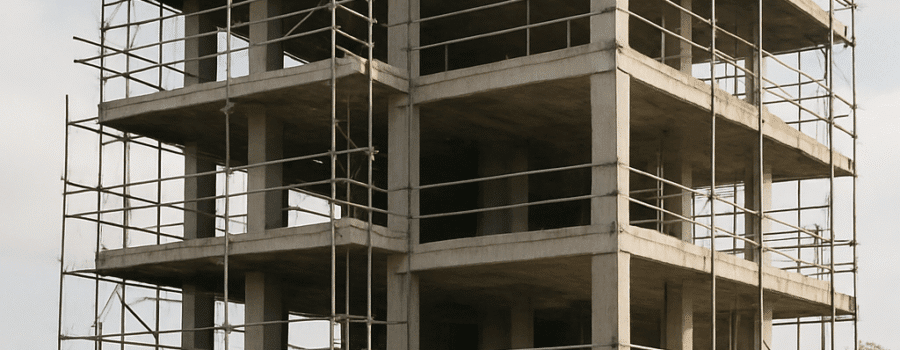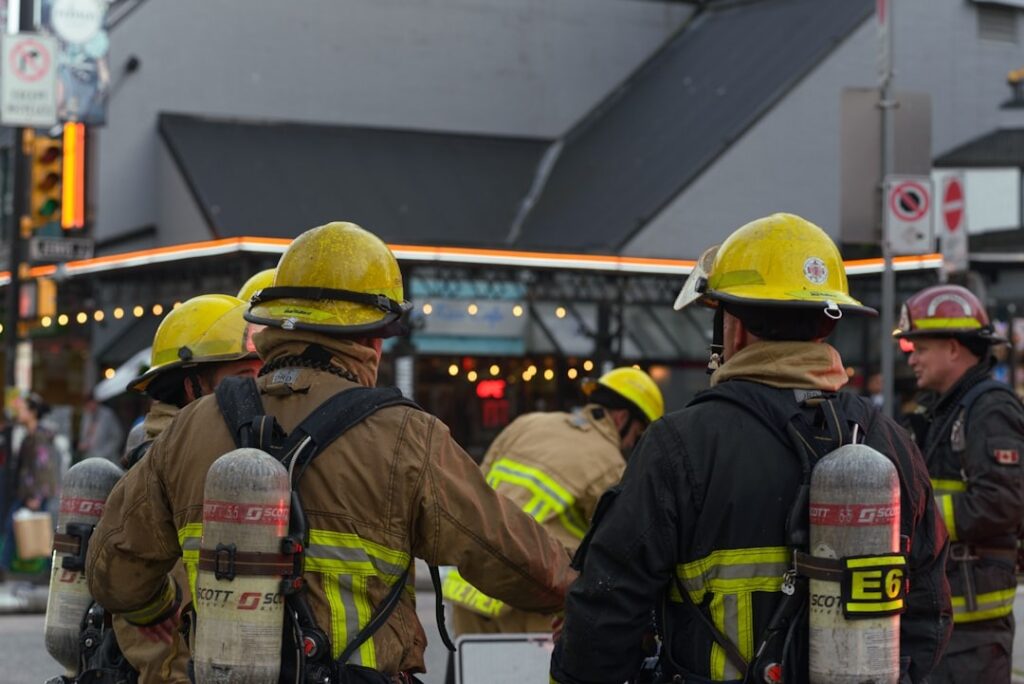
Understanding Fire Resistive Construction Techniques
Fire resistive construction is a cornerstone of modern building design, playing a critical role in safeguarding structures and their occupants against the devastating effects of fire. Whether you are a homeowner, builder, or architect, grasping the intricacies of these techniques can significantly influence your choices and enhance safety. This article delves into the various facets of fire resistive construction, such as fire rated walls, fire protection systems, and the materials that contribute to a building’s resilience against fire.
What is Fire Resistive Construction?
Fire resistive construction encompasses a set of building methods and materials specifically engineered to endure the impacts of fire for a predetermined period. This construction approach is pivotal in containing and decelerating the spread of fire and smoke, thus providing occupants with precious time to evacuate and minimizing property damage.
The Concept of Time in Fire Resistance
The effectiveness of fire resistive construction is often measured in terms of time. This temporal aspect is crucial as it determines how long a structure can withstand fire exposure before structural integrity is compromised. Time ratings guide the selection of materials and construction techniques, ensuring they meet safety standards.
Historical Evolution of Fire Resistive Construction
The principles of fire resistive construction have evolved significantly over the years. Initially, rudimentary methods focused on basic barriers and materials. However, advancements in technology and a deeper understanding of fire dynamics have led to sophisticated techniques that integrate both traditional and modern materials for enhanced protection.
Regulatory Frameworks and Fire Resistive Standards
Fire resistive construction is governed by stringent regulations and standards, which vary by region. These frameworks ensure that buildings adhere to safety norms, protecting both occupants and assets. Understanding these regulations is vital for builders and architects in designing structures that not only meet but exceed safety expectations.
Importance of Fire Resistive Construction
The importance of fire resistive construction cannot be overstated, as it fundamentally aims to preserve lives and property. By impeding the rapid spread of flames and smoke, it creates a safer environment for evacuation and limits damage.
Life-Saving Potential
At its core, fire resistive construction is about saving lives. By providing extra minutes in an emergency, these techniques allow for orderly evacuations and timely responses from emergency services. This time can mean the difference between a manageable situation and a tragedy.
Economic Impact and Cost Efficiency
While the initial investment in fire resistive construction might be higher, the long-term economic benefits are substantial. Reduced damage translates to lower repair costs, and potentially, lower insurance premiums. These savings highlight the cost efficiency of investing in fire safety measures.
Enhancing Structural Integrity
Beyond life safety, fire resistive construction contributes to the overall durability of a building. Structures designed with fire resistance in mind are better equipped to withstand other environmental stresses, enhancing their longevity and resilience.
Key Elements of Fire Resistive Construction
Several integral components constitute fire resistive construction, each essential in bolstering a building’s fire safety profile.
Fire Rated Walls
Fire rated walls are engineered to resist fire penetration for a specified duration, typically measured in hours. These walls are crafted using fire-resistant materials and techniques that prevent fire and smoke from breaching through.
Construction Techniques for Fire Rated Walls
The construction of fire rated walls involves meticulous planning and execution. Techniques include layering fire-resistant materials such as gypsum board and concrete, and ensuring airtight seals to prevent smoke infiltration.
Testing and Certification
Fire rated walls undergo rigorous testing to certify their effectiveness. Testing involves exposing wall sections to controlled fire conditions to assess their performance. Certification from recognized bodies ensures that these walls meet industry standards.
Applications in Various Building Types
Different types of buildings require varying levels of fire resistance. High-rise buildings, hospitals, and schools, for instance, have specific requirements for fire rated walls due to their occupancy and function, necessitating tailored solutions.
Types of Fire Rated Walls
Understanding the different types of fire rated walls is crucial for effective building design.
Fire Partitions
Fire partitions serve as separations within a building to confine fires to specific areas. They are typically used in corridors and between rooms to provide a barrier against the spread of fire and smoke.
Fire Barriers
More robust than partitions, fire barriers are designed to separate large sections of a building. They often extend from the floor to the roof, providing a formidable defense against fire spread.
Smoke Barriers
Smoke barriers are specifically designed to halt the movement of smoke, a major hazard during fires. These barriers protect escape routes and maintain air quality, aiding in safe evacuations.
Fire Protection Systems
Fire protection systems are indispensable in fire resistive construction, encompassing both active and passive measures.
Active Fire Protection
Active fire protection systems require activation to perform their function, such as:
- Sprinkler Systems: These systems automatically detect and suppress fires by discharging water or other extinguishing agents, significantly mitigating fire damage.
- Fire Alarms: Fire alarms play a critical role in early detection, alerting occupants and emergency services to the presence of a fire.
- Smoke Detectors: By identifying smoke early, smoke detectors trigger alarms and initiate evacuation procedures, enhancing safety.
Passive Fire Protection
Passive fire protection systems are inherently effective without requiring activation. They include:
- Fire Doors: Designed to automatically close during a fire, these doors form a barrier that prevents the fire from spreading to other areas.
- Fire Dampers: Installed within duct systems, fire dampers close upon detecting heat, blocking fire and smoke from traveling through ventilation systems.
Materials Used in Fire Resistive Construction
The choice of materials in fire resistive construction is paramount, as they determine the building’s ability to withstand fire exposure.
Fire-Resistant Materials
Several materials are commonly utilized for their fire-resistant properties:
- Concrete: Known for its non-combustible nature, concrete forms a solid barrier against fire, making it a staple in fire resistive construction.
- Gypsum Board: Frequently used in fire rated walls, gypsum board withstands high temperatures and contributes to the integrity of fire barriers.
- Intumescent Paints: These paints react to heat by swelling, creating an insulating layer that protects structural elements from fire.
- Brick and Stone: Naturally fire-resistant, these materials are often incorporated into buildings to enhance fire safety.
Innovations in Fire Resistant Materials
Recent advancements have led to the development of innovative materials that boost fire resistance:
- Fire-Resistant Glass: Engineered to endure high temperatures, fire-resistant glass maintains its integrity without shattering, providing safety and visibility.
- Advanced Composite Materials: Used in structural components, these materials combine strength with fire resistance, offering enhanced protection without sacrificing design flexibility.

Benefits of Fire Resistive Construction
Fire resistive construction delivers a multitude of benefits that extend beyond immediate fire safety.
Enhanced Safety
By affording occupants more time to evacuate safely, fire resistive construction significantly boosts the overall safety of a building. This enhanced safety is a compelling argument for adopting fire resistive techniques.
Reduced Damage
Limiting the spread of fire within a building not only protects lives but also preserves property, reducing the extent and cost of repairs. This financial benefit underscores the value of investing in fire resistive measures.
Compliance with Regulations
Adhering to fire safety regulations and building codes is mandatory for new constructions and renovations. Fire resistive construction ensures compliance, avoiding legal repercussions and ensuring peace of mind for stakeholders.
Insurance Benefits
Buildings equipped with comprehensive fire resistive features often qualify for lower insurance premiums. The reduced risk associated with these structures translates to cost savings over the lifespan of the building.
Challenges in Fire Resistive Construction
While fire resistive construction offers significant advantages, it also presents certain challenges that must be addressed.
Cost Implications
The initial cost of fire resistive materials and systems can be higher than standard options. However, the long-term savings and benefits often justify this investment, especially when considering potential reductions in damage and insurance costs.
Design Limitations
Certain fire resistive materials may impose limitations on architectural design. Balancing aesthetic desires with safety requirements can be challenging, necessitating innovative solutions and compromises.
Maintenance Requirements
Fire protection systems require regular maintenance to ensure their effectiveness. This ongoing requirement can be resource-intensive but is crucial for maintaining the safety standards of a building.
Conclusion
Fire resistive construction is a fundamental aspect of building safety that extends beyond mere compliance with regulations. By understanding the intricacies of fire rated walls, protection systems, and materials, stakeholders can make informed decisions that elevate safety standards and protect lives. Whether constructing a new building or upgrading an existing one, incorporating fire resistive construction techniques is an investment in safety and security.
Fire safety transcends regulatory obligations; it is about safeguarding lives and property. With a strategic approach to fire resistive construction, you can ensure that your building is as secure as possible, providing peace of mind for occupants and owners alike.

Jason Somers, President & Founder of Crest Real Estate
With over 15 years of professional experience in the Los Angeles luxury real estate market, Jason Somers has the background, judgement and track record to provide an unparalleled level of real estate services. His widespread knowledge helps clients identify and acquire income producing properties and value-ad development opportunities.
Learn more about Jason Somers or contact us.



